May gardening jobs: our list of the 10 top tasks this month
Our list of essential May gardening jobs will keep your patch in tip-top shape throughout the warmer months

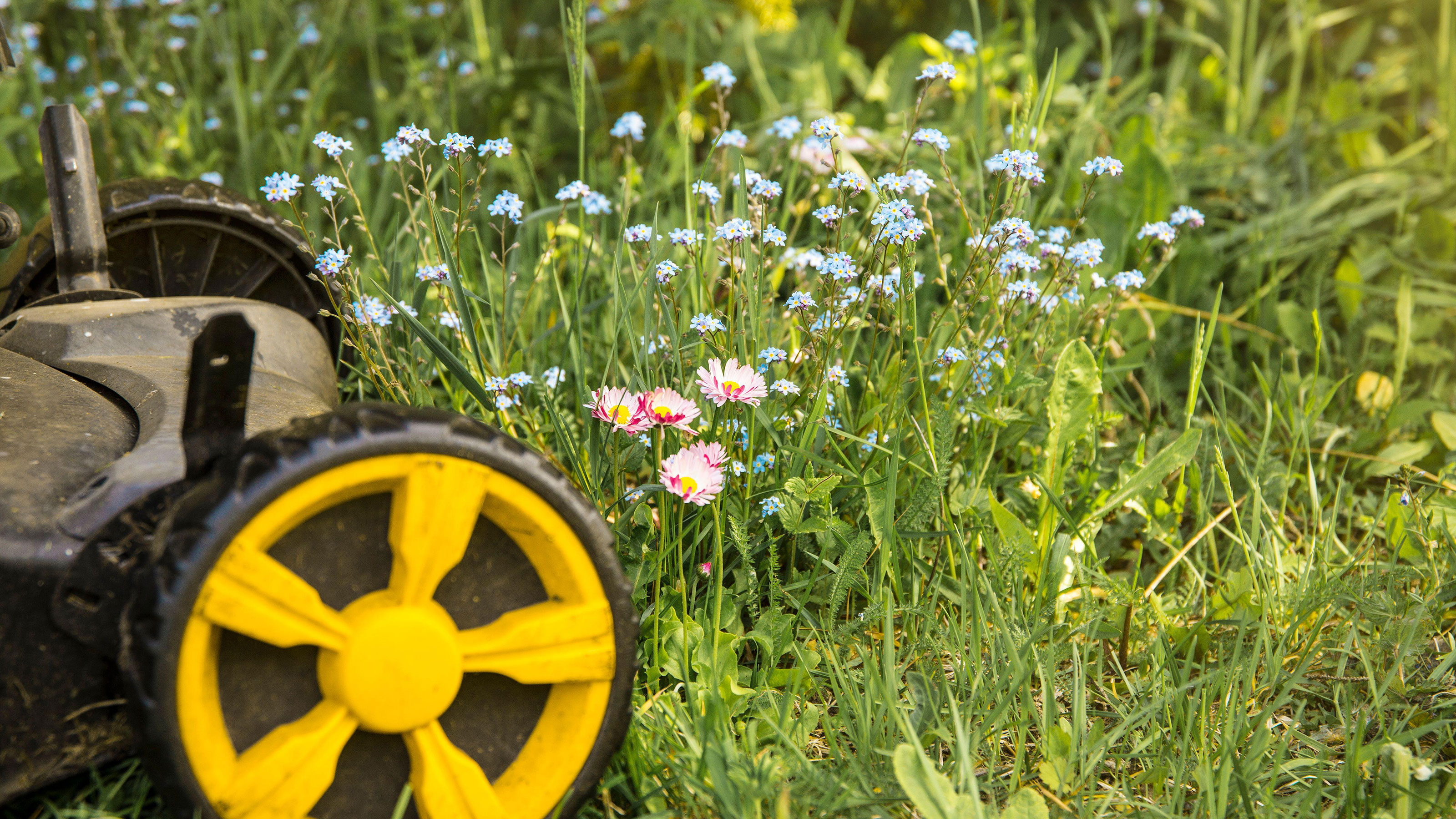
Our list of May gardening jobs will will keep you busy all month long and ensure your garden is in the best possible shape. From checking new growth for pests and diseases to cutting back and dividing early-flowering plants, thinking up some great ideas for wildlife and taking the year’s first fresh cuttings, you will find plenty to do.
With the warmer weather finally here and plenty of sunshine to enjoy, it's one of the best times in the monthly gardening calendar, so make sure you cross off these 10 tasks so you can enjoy a beautiful outdoor space throughout the summer months.
Keep busy with our top May gardening jobs
Now is the perfect time to get outside and ensure your outdoor space is in great shape. So with that in mind, here is our edit of the 10 most important jobs to undertake in the garden this month.
1. Give your plants the Chelsea chop
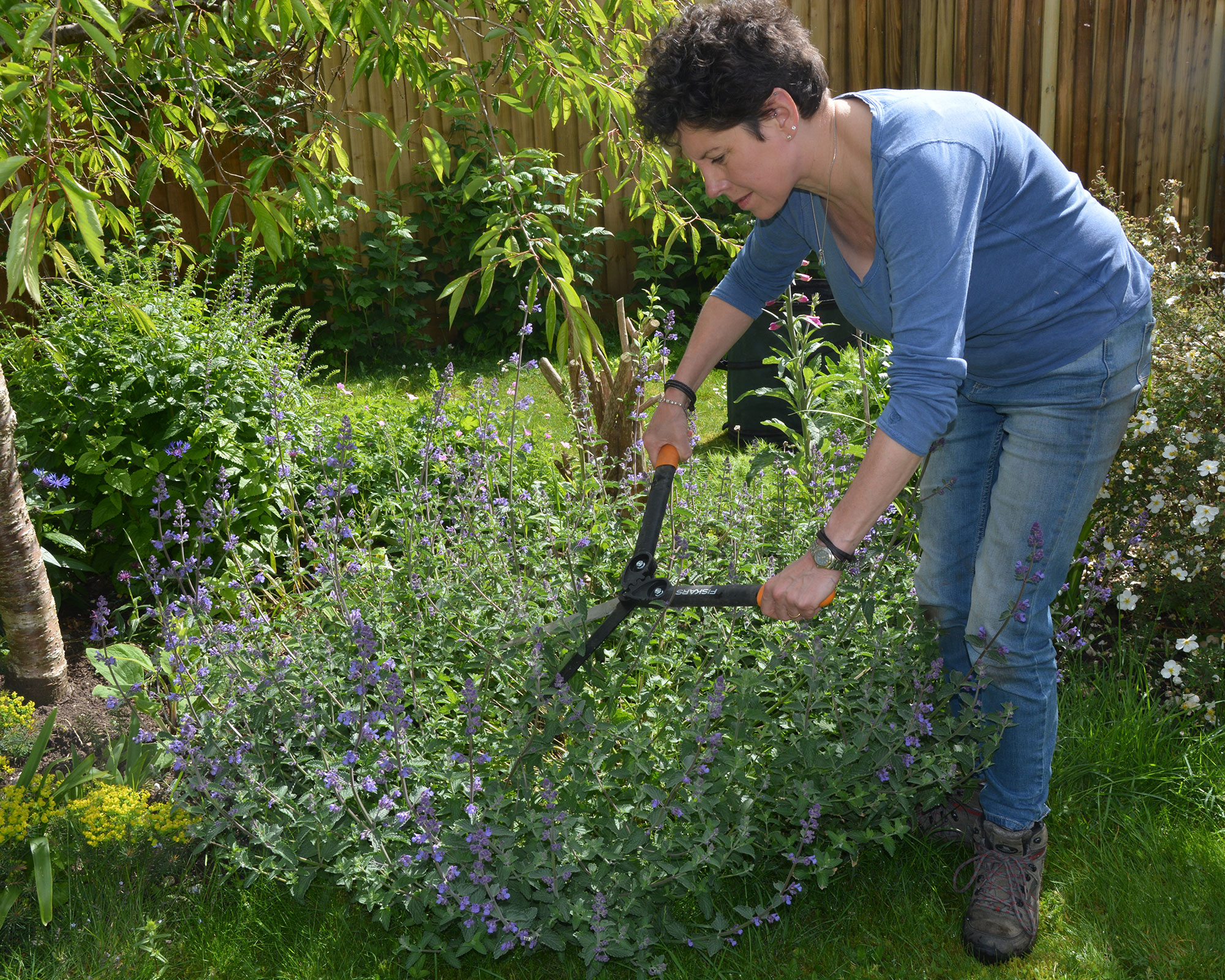
It’s the time of year when certain flowering herbaceous perennials can be cut back once they start growing robustly to keep them looking neat and encourage a second flush of blooms.
This procedure is called the ‘Chelsea chop’ because it coincides with the world-famous RHS Chelsea Flower Show in London. Plants that benefit include perennial sunflowers, phlox, sedums, catmint, Echinacea and heleniums.
Our large clump of Nepeta (catmint) grows beautifully in late spring but then starts to collapse outwards, leaving the central bare stems nakedly on show and smothering the other plant growing around it. By chopping its stems back by a third or even up to a half of their length, you remove the weight that is holding them down and covering large areas of border, and encourage new growth that will give you an extended flowering period.
Top tip: If you have several clumps of the same plant dotted around the garden, try and stagger the chopping over a few weeks, as well as leaving some uncut, so you get a longer display of blooms.
2. No Mow May

One of the most interesting May gardening jobs is actually a ‘non-job’. No Mow May is an initiative started by the charity Plantlife to help the UK’s insect population that has been decimated by intensive farming and the use of pesticides.
By leaving your best lawn mower in the shed for a little longer, and letting your lawn, or a part of it, to grow naturally this month you can create a wonderful habitat for insects and other wildlife and also save yourself the task of cutting the lawn every week.
At the end of the month, gardeners who have taken part can join Plantlife's Every Flower Counts survey and tot up the number of wildflowers that have popped up among the growing grass.
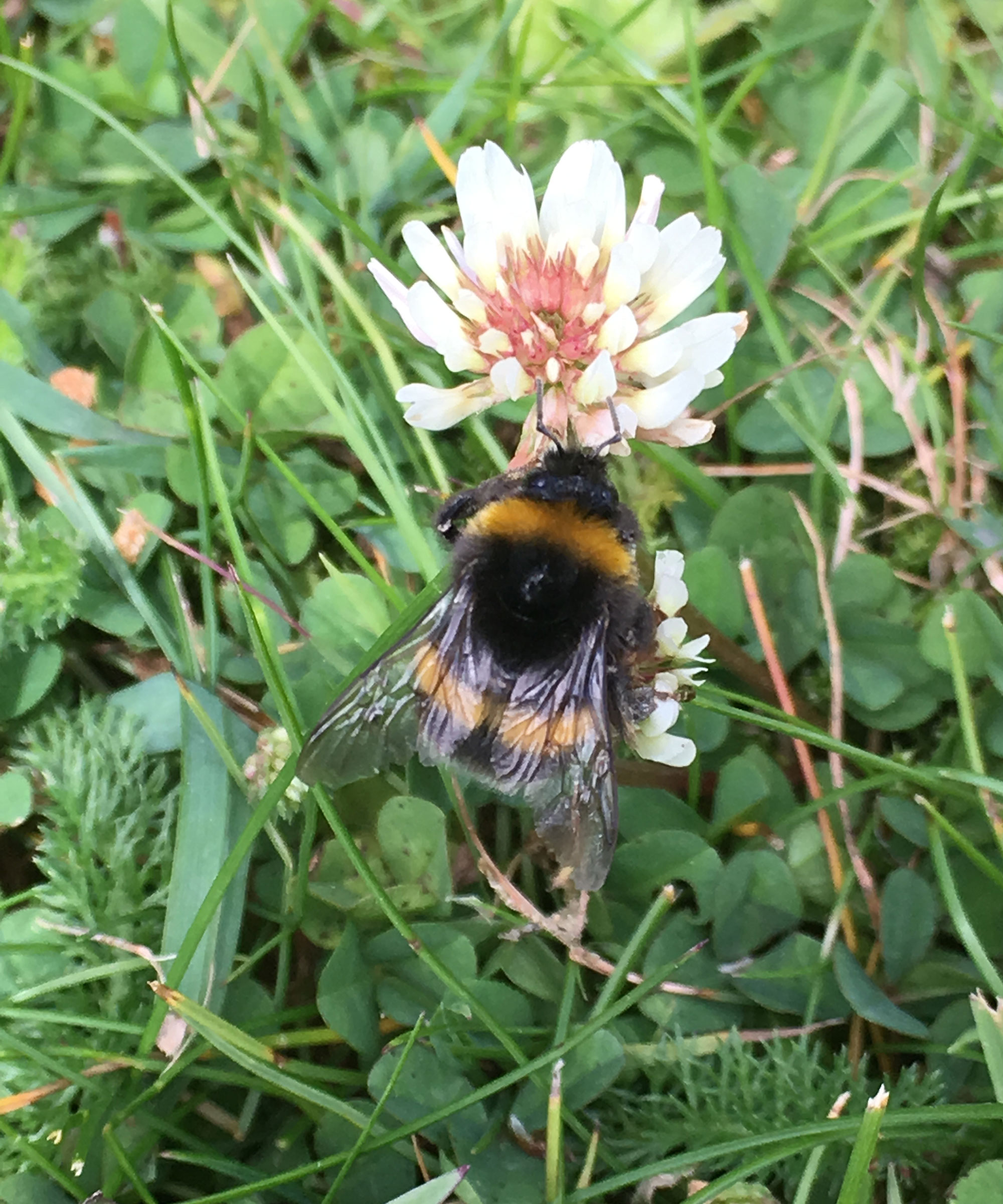
In previous years the report has found that 80 per cent of lawns support the equivalent of around 400 bees a day with the nectar sugar produced by flowers such as dandelion, white clover and selfheal.
An extra 20 per cent of lawns with longer grass and later-flowering, taller plants such as field scabious, red clover, oxeye daisy and knapweed (dubbed ‘superlawns’) were found to be supporting 10 times as many – up to 4,000 bees a day.
This means that the ideal ‘haircut’ for your garden is a punky mohican with short and long bits! So this May, give yourself a break from mowing and let your lawn grow, then afterwards think about keeping a special patch of grass and flowers to help your local insects.
3. Prune early-flowering shrubs
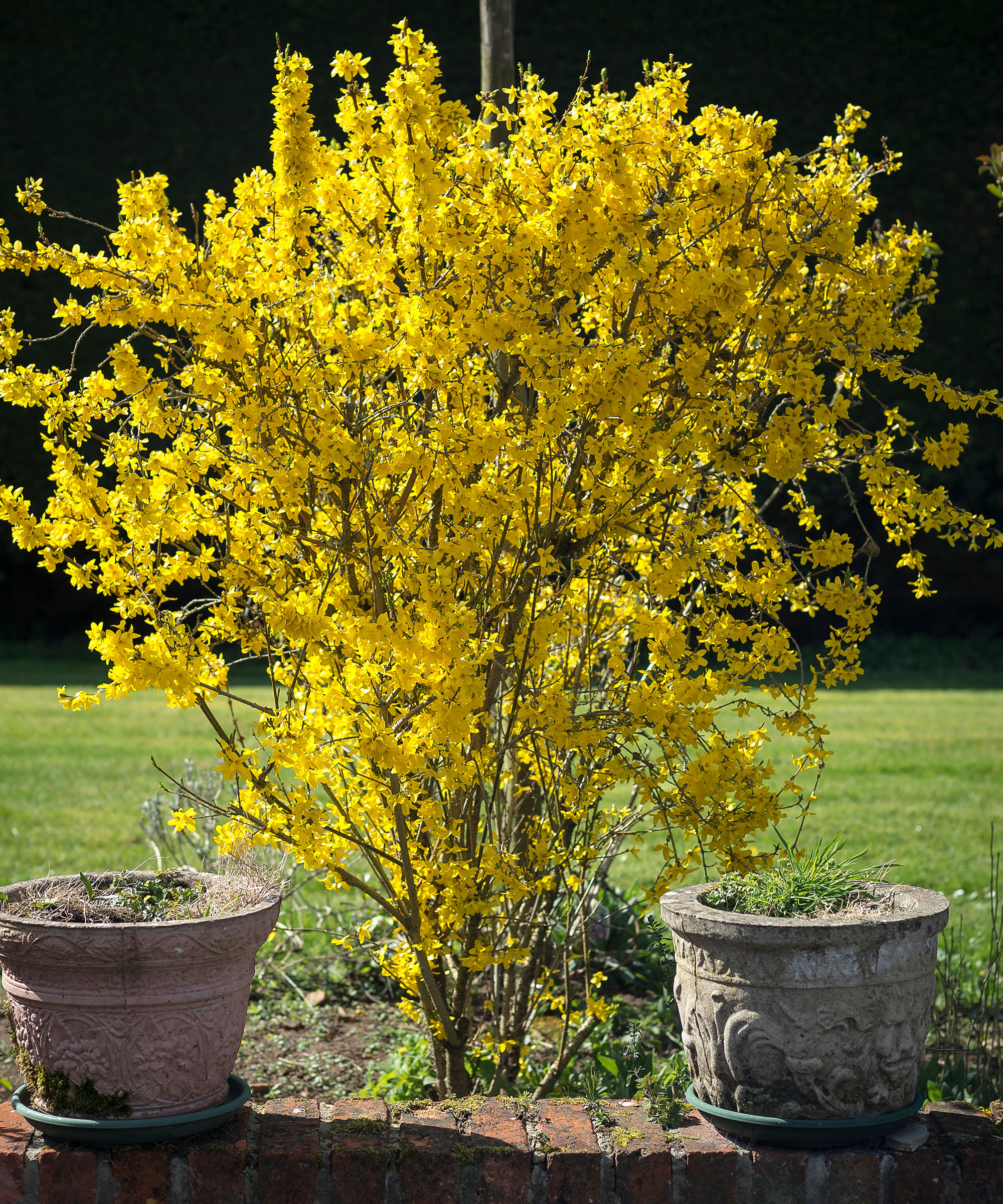
The earliest-flowering shrubs have finished blooming now, so it’s time to give them their annual trim. For the best results, follow our in-depth guide on how to prune forsythia, and do the job immediately after its brilliant yellow blooms have fallen because each spring’s blossom develops on new growth made the previous year.
Therefore the sooner you cut it, the longer the period of time it has to regrow those flowering stems. If you leave it altogether the branches will grow lanky and congested, with flowers at the time and lots of bare wood underneath. If you prune it in autumn like most deciduous trees and shrubs you will simply remove the flowering branches and will get a poor show the following year.
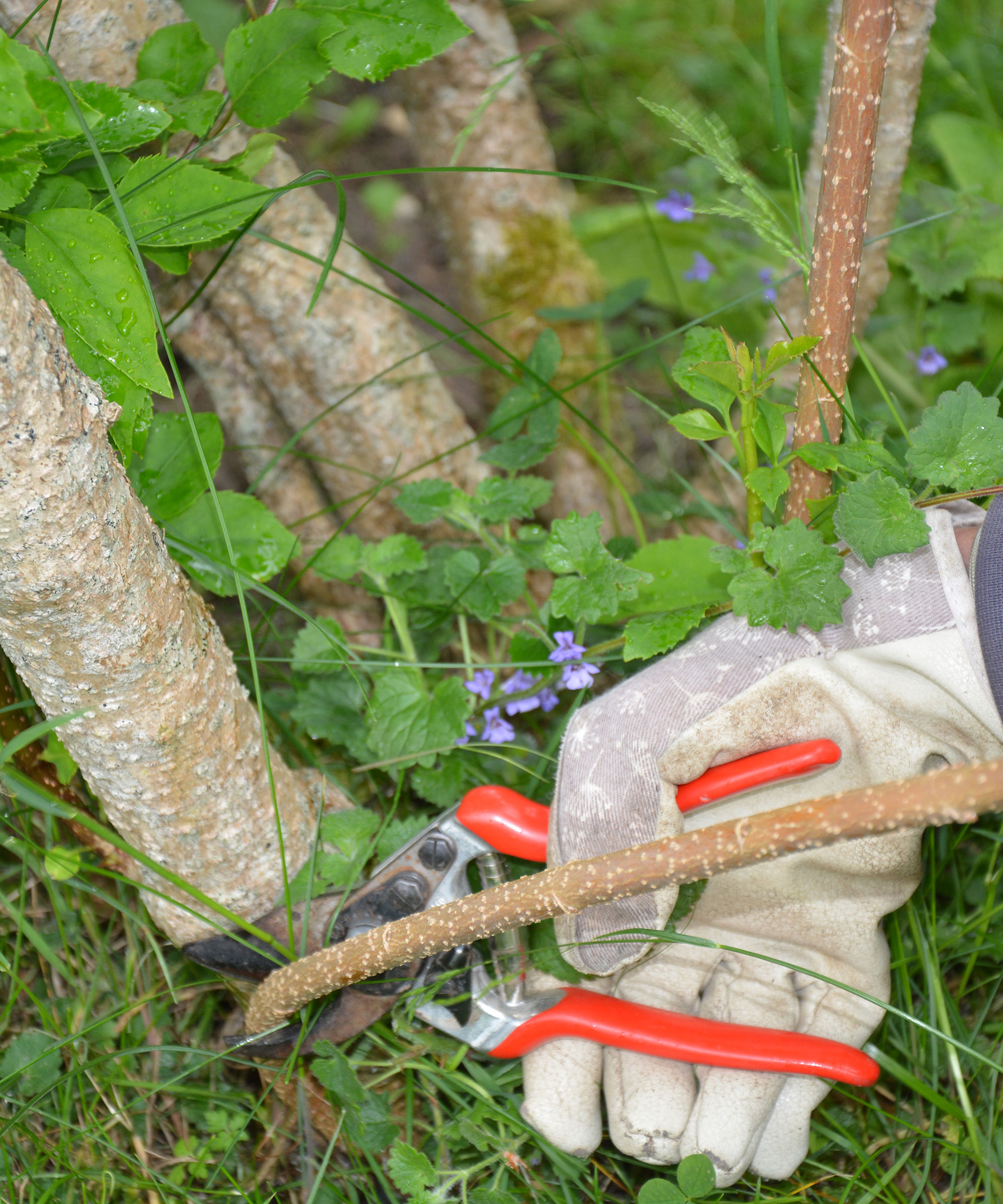
Pruning shrubs correctly will help you create an open, attractive shape that encourages good airflow through the branches.
Start by removing the ‘three Ds’ – dead, damaged and diseased wood – then concentrate on spindly shoots and growth that is cluttering up the centre of the plant. Remove unwanted secondary shoots growing from the ground and cluttering the base of the plant.
Top tip: Cut back to a healthy, upward- and outward-growing shoot, then feed and mulch your shrub afterwards to encourage robust new growth.
4. Be on your guard for pests
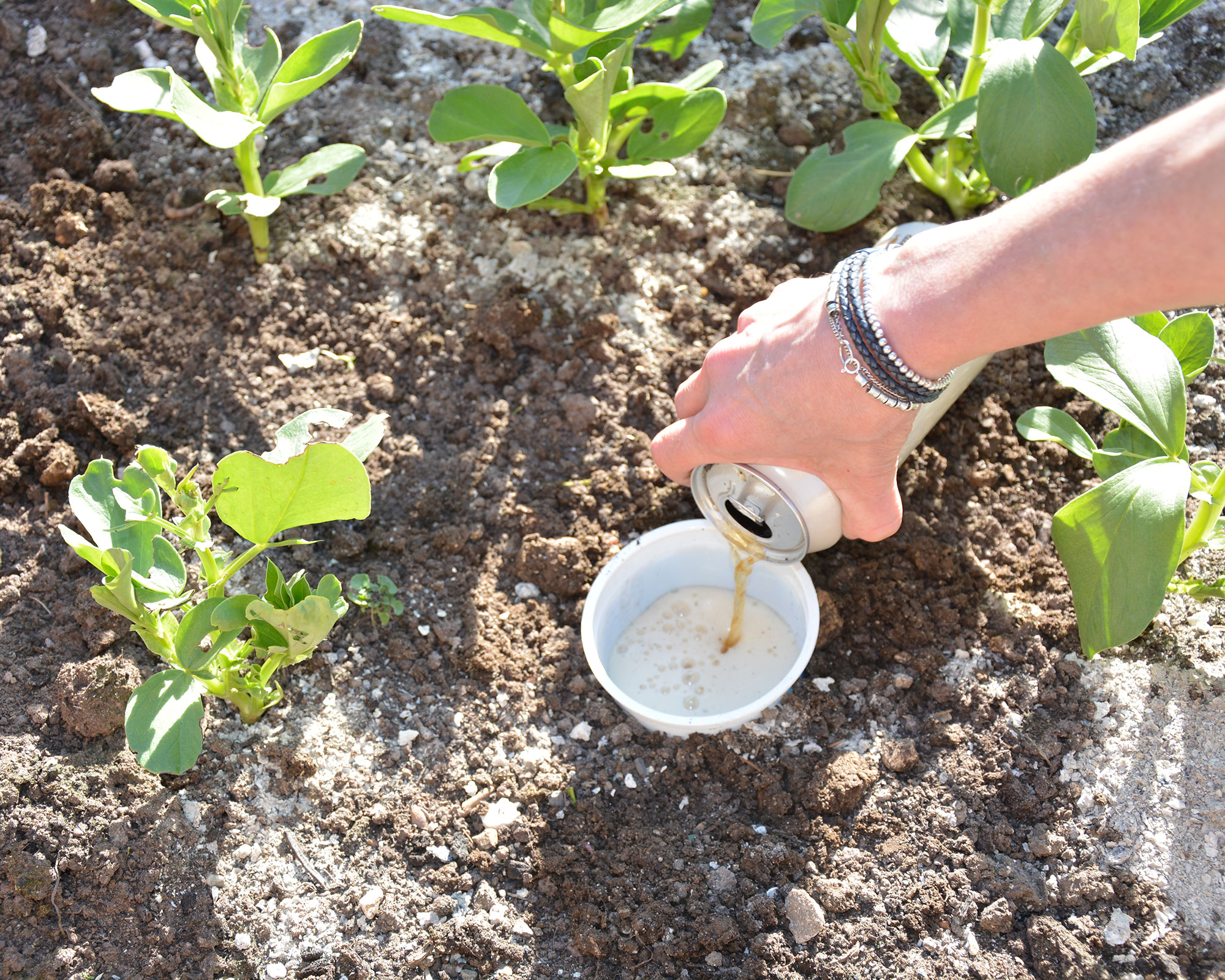
Warmer temperatures and lots of fresh new growth makes springtime a pest paradise, so gardeners are advised to be on our guard when completing their May gardening jobs. The usual bad boys, the slugs and snails and aphids and greenfly will be starting to make their presence felt, so deal with them as soon as you find them.
It’s much easier to tackle small colonies of pests than large infestations, so pop on your gardening gloves and squish greenfly when you see them, then learn how to get rid of slugs and snails so you can keep them away from your precious plants.
One option is to set beer traps around the garden for the molluscs. These are pots of beer (it can be a cheap brew!) sunk into the soil that attract the slugs and snails, which fall in and drown. Make sure you leave the lip of the pot standing proud of the soil or you will also lure helpful pest predators such as ground beetles and spiders to their doom.
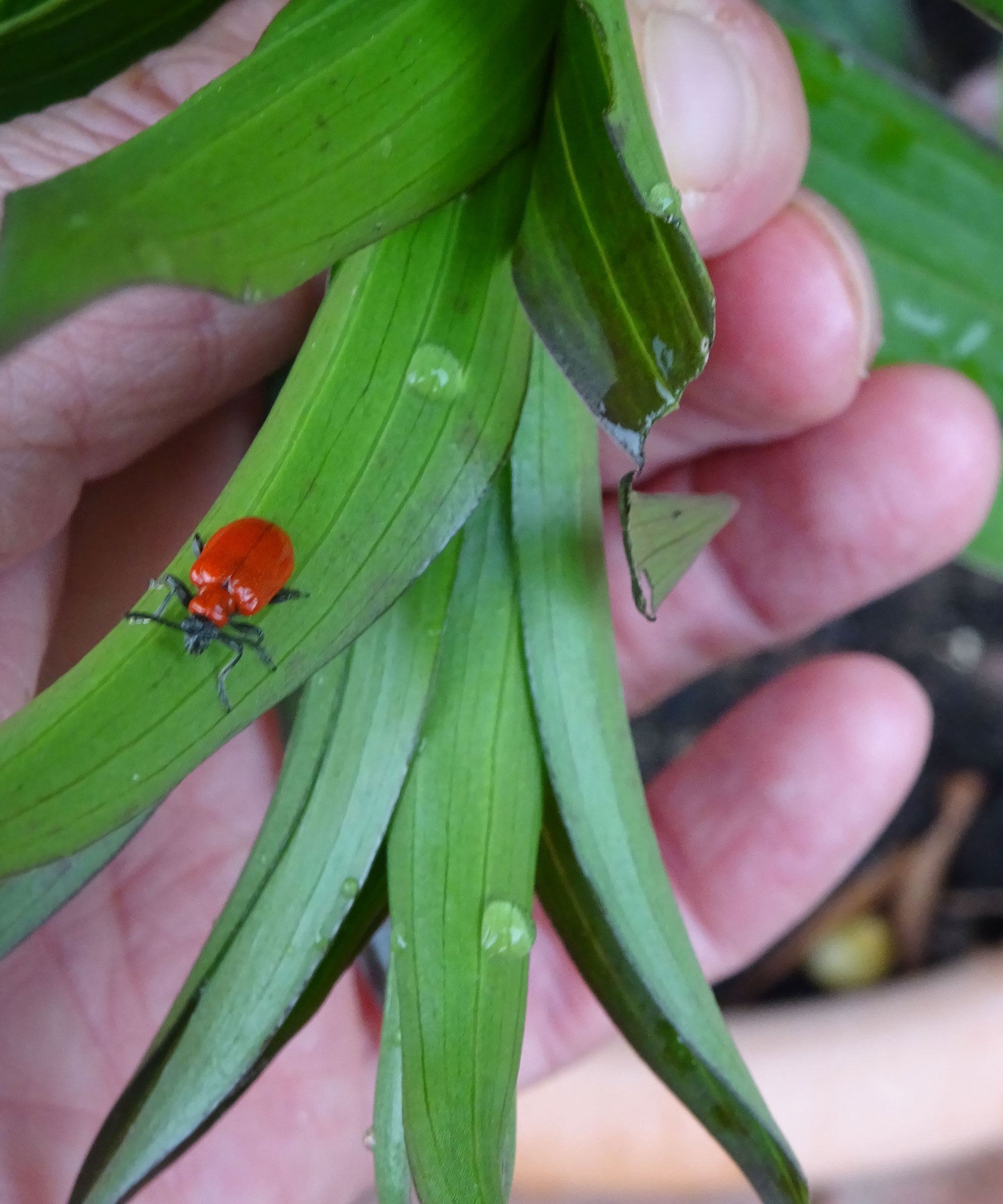
Other pests to watch out for are lily beetles and vine weevil grubs. Lily beetles are bright scarlet bugs around 1cm long. They target lilies and fritillaries and can strip a plant of leaves and flowers.
To add to the horror, their larvae protect themselves by covering themselves with their own droppings. Not only do they make our lilies look unattractive, by eating the leaves they seriously weaken the plants.
I have found that the best way to combat them is by spraying lilies with Grazers G4, available from Amazon, a deterrent that drives the lily beetles away and stops them landing on plants, mating and reproducing. It needs to be reapplied every 10 days or so but I have found it works well and best of all, keeps the beetles in the food chain for predators.
Vine weevils wreak havoc within the compost of your container gardens, eating the roots of plants and causing a swift and sudden death. You can treat them with a chemical solution of Bug Clear Ultra Vine Weevil Killer, available from Amazon, or when the weather warms up, go down the organic route and hit them with a biological control. Nemasys Natural Vine Weevil Killer, also from Amazon, is a nematode, microscopic eelworms that you water onto the soil to ill specific pests. They are widely available and work very well.
Top tip: The best pest control is to encourage birds and predatory insects such as wasps, ladybirds and hoverflies into your garden. Spiders, frogs, toads and hedgehogs will also help.
5. Create a wildlife area
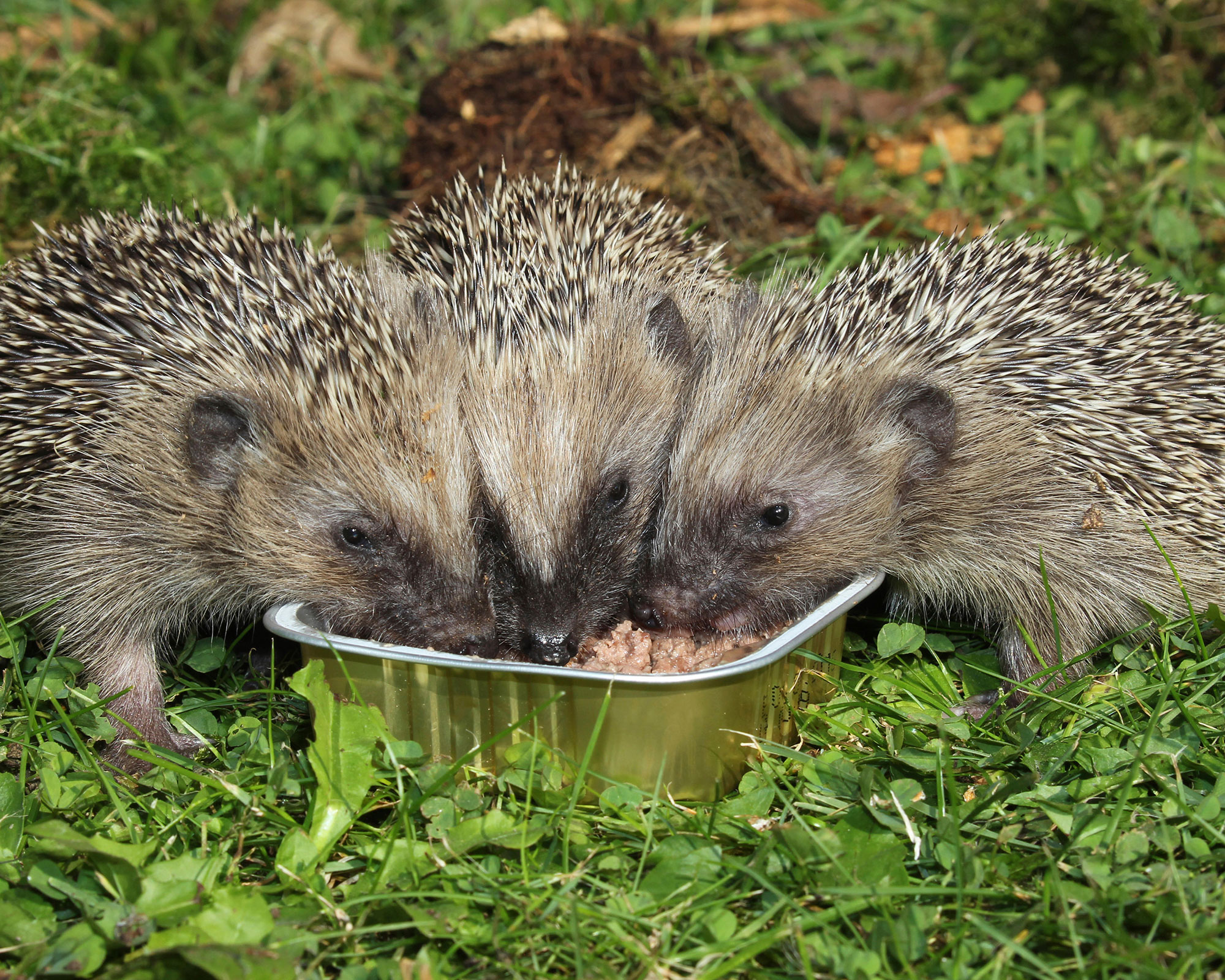
As well as being a haven for wildlife, insects and birds, our gardens also help create corridors between larger areas of natural habitat.
When you are thinking up your wildlife garden ideas, remember you don’t need a large garden or even need to give over all of what you have to help wildlife. We have a quiet corner of the garden with an old pile of prunings, planted with foxgloves, borage and other plants for pollinators where we often see signs of hedgehogs and foxes.
One of the best features to add is a garden pond. Failing that, a saucer of fresh water gives birds and hedgehogs somewhere to drink. A saucer of pebbles topped up with water and tucked away somewhere will also provide a safe drinking spot for insects.
A patch of long grass offers a breeding ground for many insects and is a place where smaller mammals and invertebrates can hide.
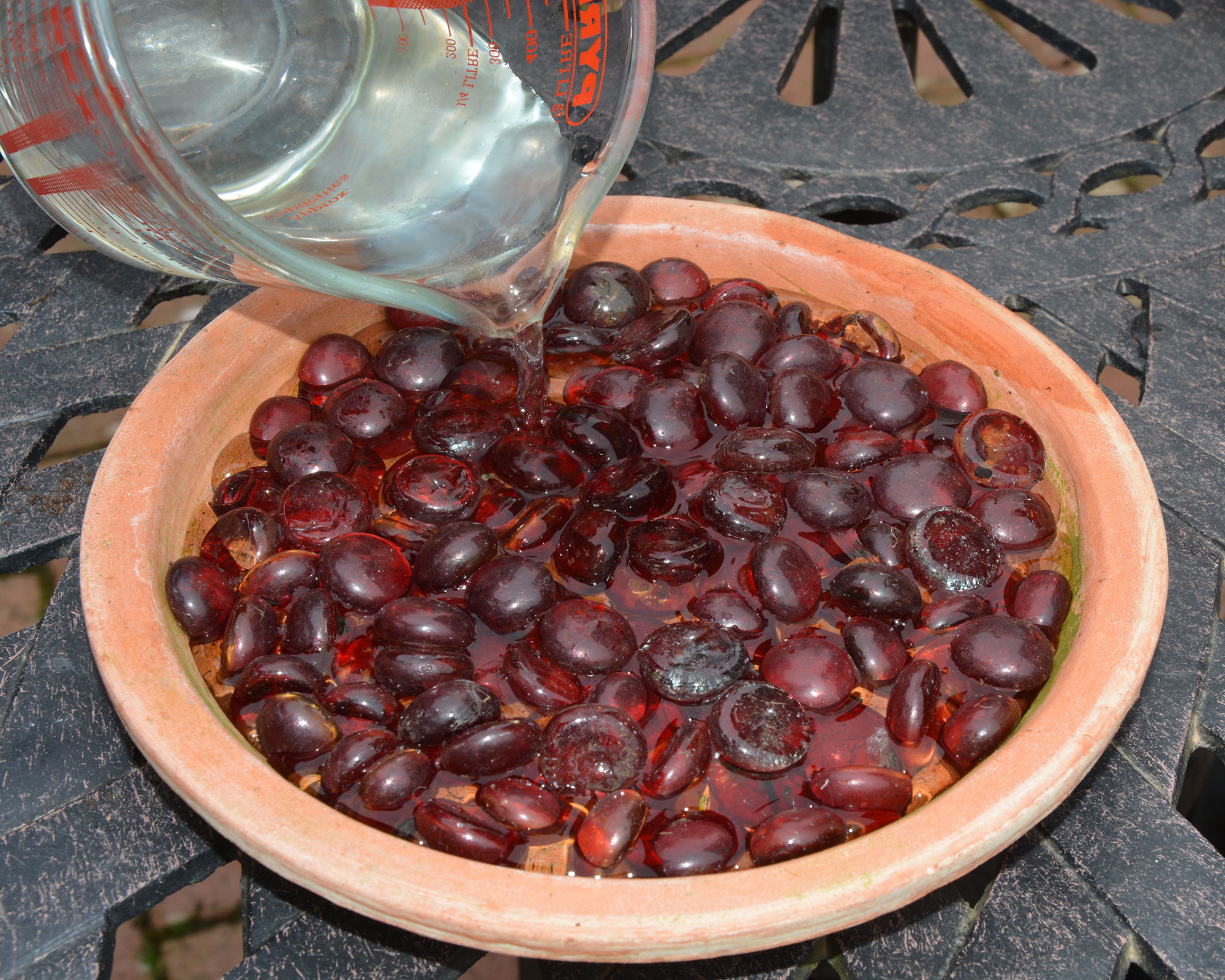
Trees and shrubs, even small ones in a pot, provide cover for birds and plants supply bees, butterflies and other insects with nectar.
Avoid flouncy multi-petalled hybrid plants as these are often sterile (without pollen) and what nectar they have is hard for insects to access. Plant varieties that will bring something to the party throughout the year. Winter heather, crocus, forget-me-nots, pulmonaria and rosemary are excellent in early spring, followed by comfrey, foxgloves, delphiniums and stachys.
For late summer merging into fall, plant dahlias, echinacea, heleniums, sedum, scabious and globe thistles.
Top tip: Make sure birds and garden animals have fresh food and water available. Wash feeders and bird baths regularly to avoid spreading disease.
6. Keep on top of weeding
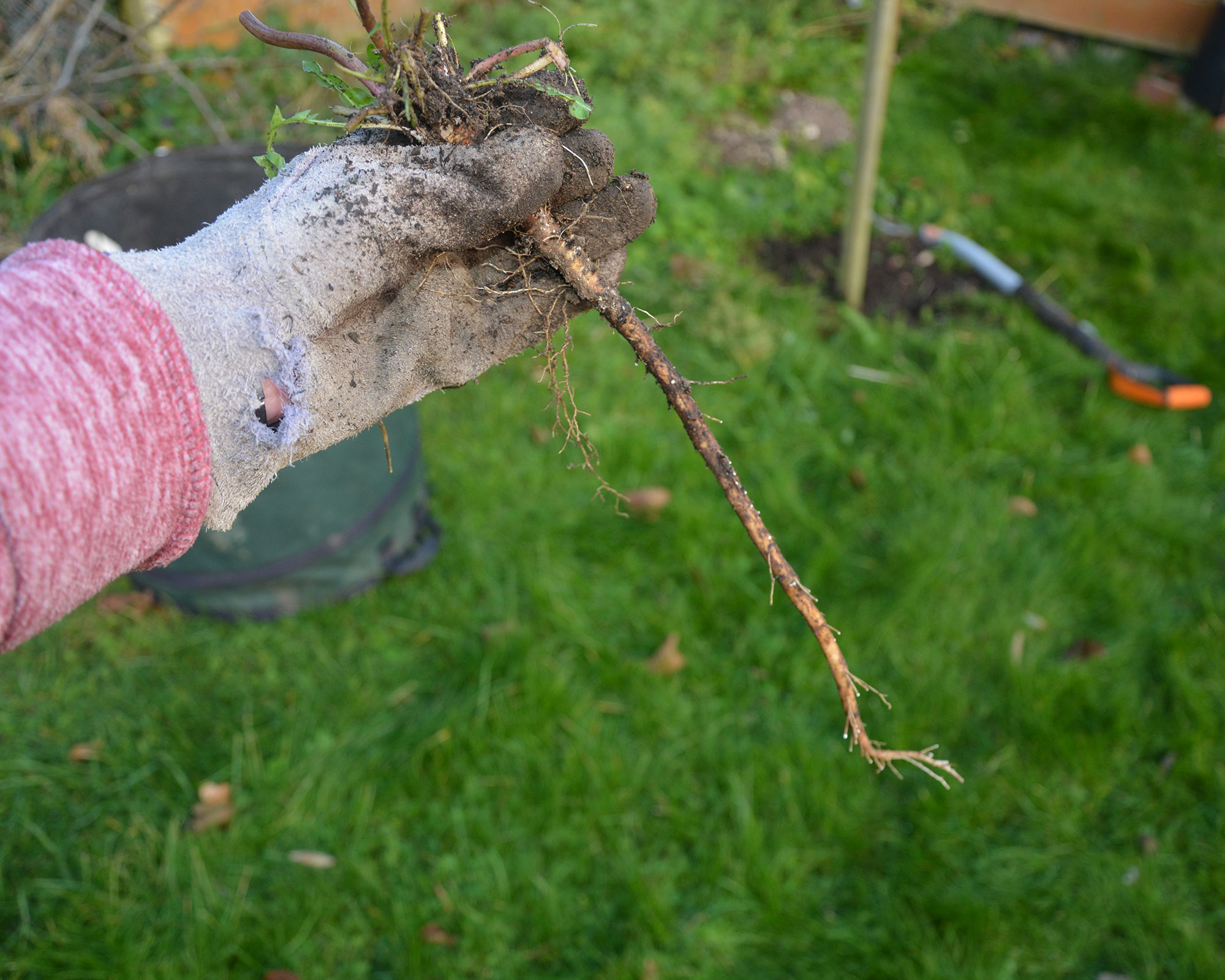
Learning how to get rid of weeds and stop them from spreading is a perennial chore, so do a little and often to keep plants healthy and the garden neat.
It’s even more important to keep on top of weeds as part of your May gardening jobs because we are filling our gardens with new and young plants and weeds are in indirect competition with them for light, air, water and nutrients from the soil. Weeds also host diseases and their leaves are a refuge for pests that emerge at night to eat plants.
The easiest way to weed is to sharpen the blade of a hoe and run it over the top of the soil every few days. This cuts down the weed seedlings and you can leave them to rot down and feed the soil.
Larger weeds such as perennial chickweed, dandelions and garlic mustard will need digging out, but make sure you remove every bit of root or it will speedily regenerate into a new, unwanted plant.
If you choose to use one of the best weed killers on the market, take care not to deploy them on windy days as they will drift onto, and kill your precious plants.
If you want to get rid of lawn weeds with a chemical, use one specifically formulated for lawn weeds as a general weed killer will do for your grass as well.
Top tip: Never compost weeds with ripe seedheads as the seeds will linger in the warmth of the composting and then be spread around the garden.
7. Beat diseases for a healthy garden

One of the May gardening jobs you need to prioritise is making sure your plants have a strong and healthy start to the growing season and stay that way throughout. This means nipping diseases in the bud so that small infections don't spread to larger areas of the garden.
Prevention is better than cure, so start as you mean to go on by buying healthy plants from a reputable source and planting them correctly. Give them enough space to grow healthily, keep them free from weeds and pests and make sure they have enough food and water.
Four of the more prevalent diseases you may come across this summer are as follows:
- Powdery mildew is a fungal disease that debilitates plants. Help protect against it by watering plants well and make sure they aren’t crammed in together.
- Rose black spot is a common and serious fungal disease. Remove and bin or burn affected leaves, treat plants with a suitable fungicide and mulch well to bury remaining spores.
- Box blight causes severe die-back. The best defence is good husbandry, mulching, reduced trimming to create more open shapes and quarantining new Buxus shrubs for a month before planting.
- Clematis wilt strikes suddenly but isn’t fatal. Remove affected growth back to healthy material and bin it. Disinfect pruning tools and water and mulch plant roots to reduce stress.
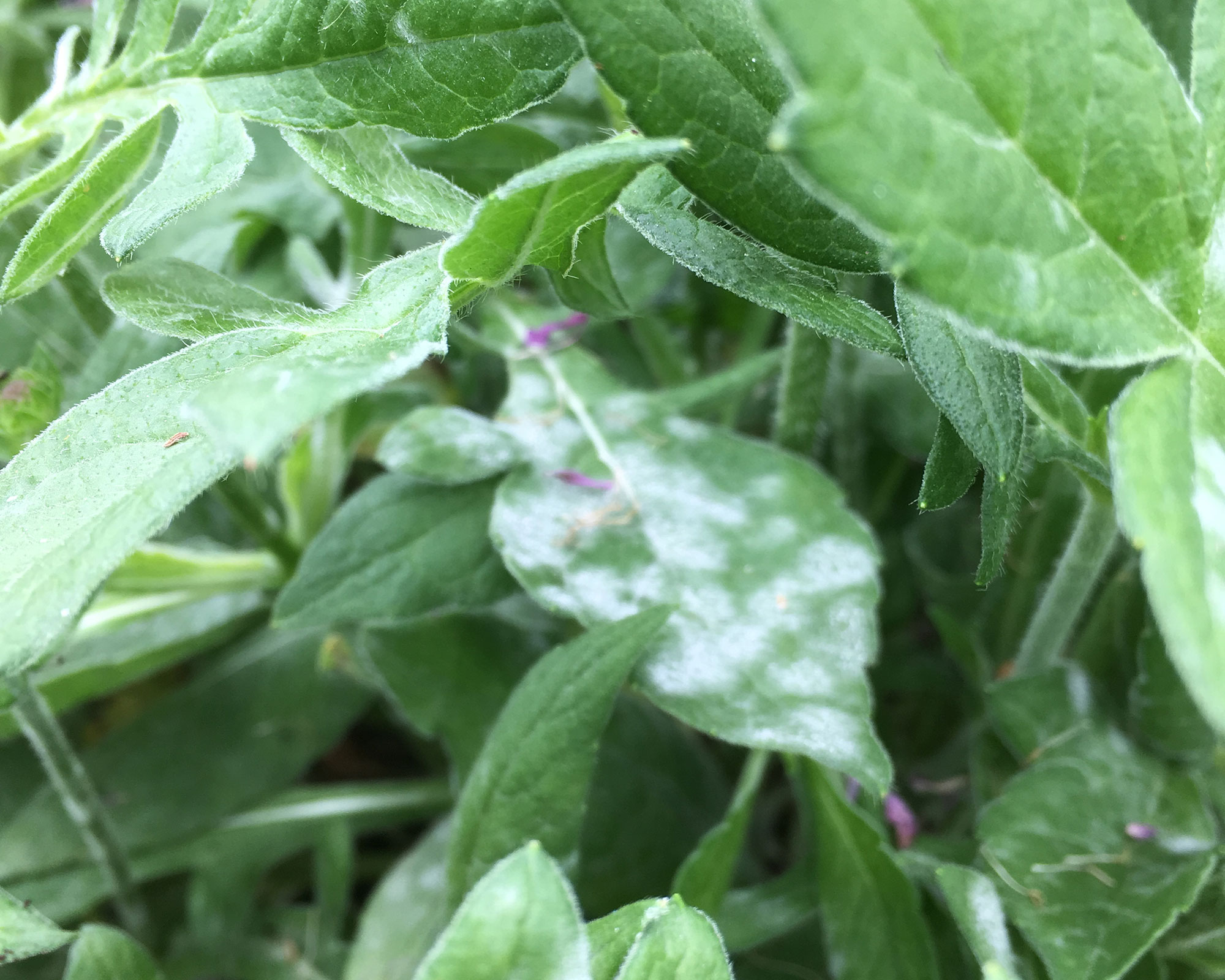
Most fungal diseases can be combatted by using a chemical solution such as Provanto Fungus Fighter, available from Amazon, which comes as a concentrate that you make up with water or a ready-to-use spray, also from Amazon.
Top tip: Never compost diseased cuttings as the sickness spores will thrive in the warmth of your compost heap and you run the danger of spreading them throughout the garden.
8. Divide large clumps of primroses

Primroses, named after the Latin for ‘first rose’ even though they aren’t members of the rose family, are one of the year’s early delights. Their buttery flowers herald the promise of warmer days ahead and these sweet little plants will happily grow in most gardens.
However, their prolific growth sometimes causes individual flowers to turn into unwieldy and unproductive clumps with a lot of tatty foliage and a few flowers. Luckily, because primroses are so easy going, this is an easy problem to remedy by dividing the plants.
Do it every two or three years and you can expect two or three new plants from one large old one, followed by a fresh flourish of healthy flowers from the new divisions.
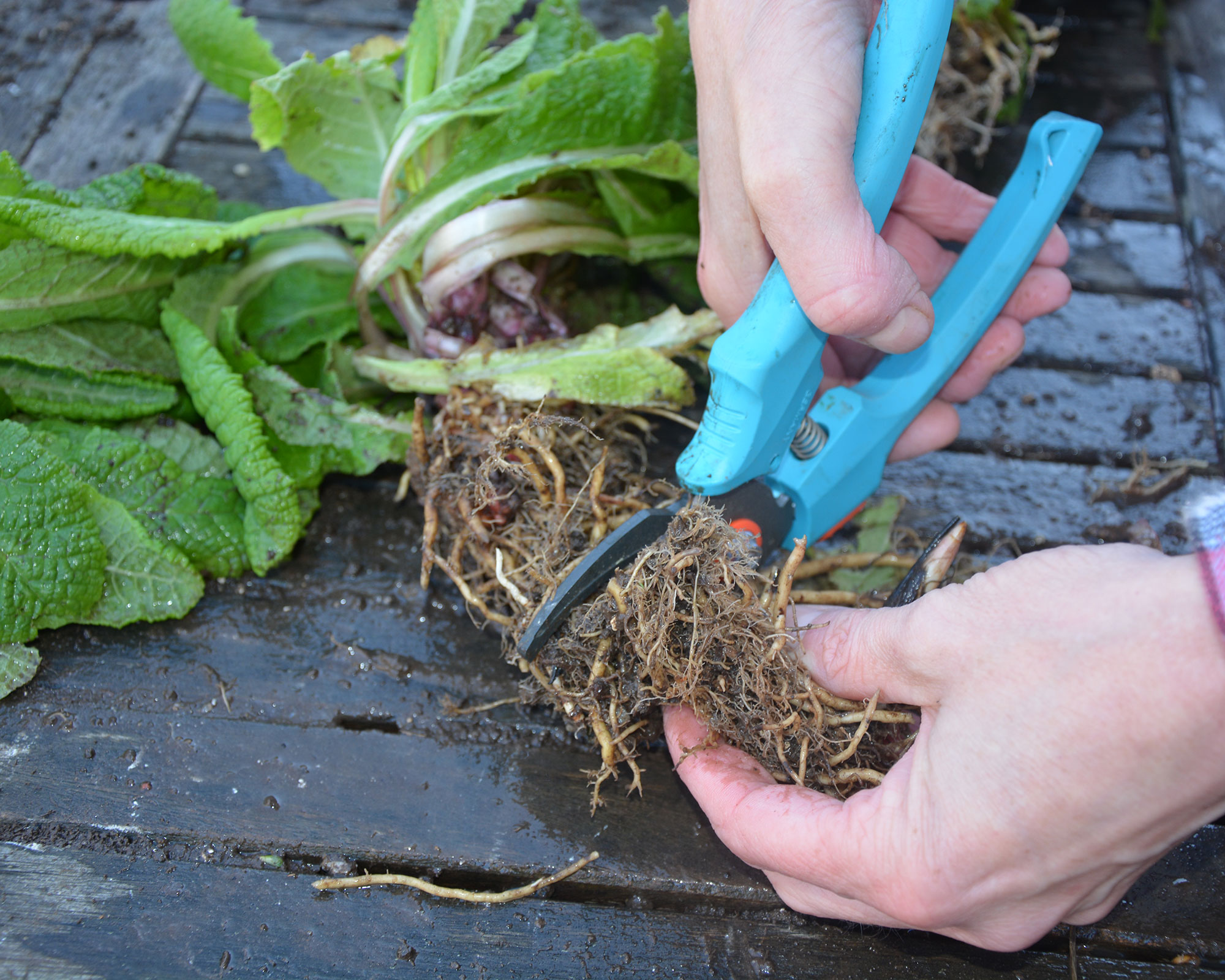
Dividing primroses is an easy and enjoyable task.
- Split the lifted clump either by hand or using a sharp knife, making sure each division has healthy roots and top growth.
- Check the roots are healthy then soak them in water for a hour or so to plump up before planting.
- Trim the roots back to 4in (10cm). This removes older ones and boots the growth of fine feeder roots.
- Also remove the larger, older and more battered foliage as they can cause the plant to lose water after replanting.
Top tip: Replant your primrose divisions in full sun or partial shade and keep their soil damp while they re-establish. They look beautiful growing with other native spring flowers such as forget-me-nots and little wild violets.
9. Start saving water
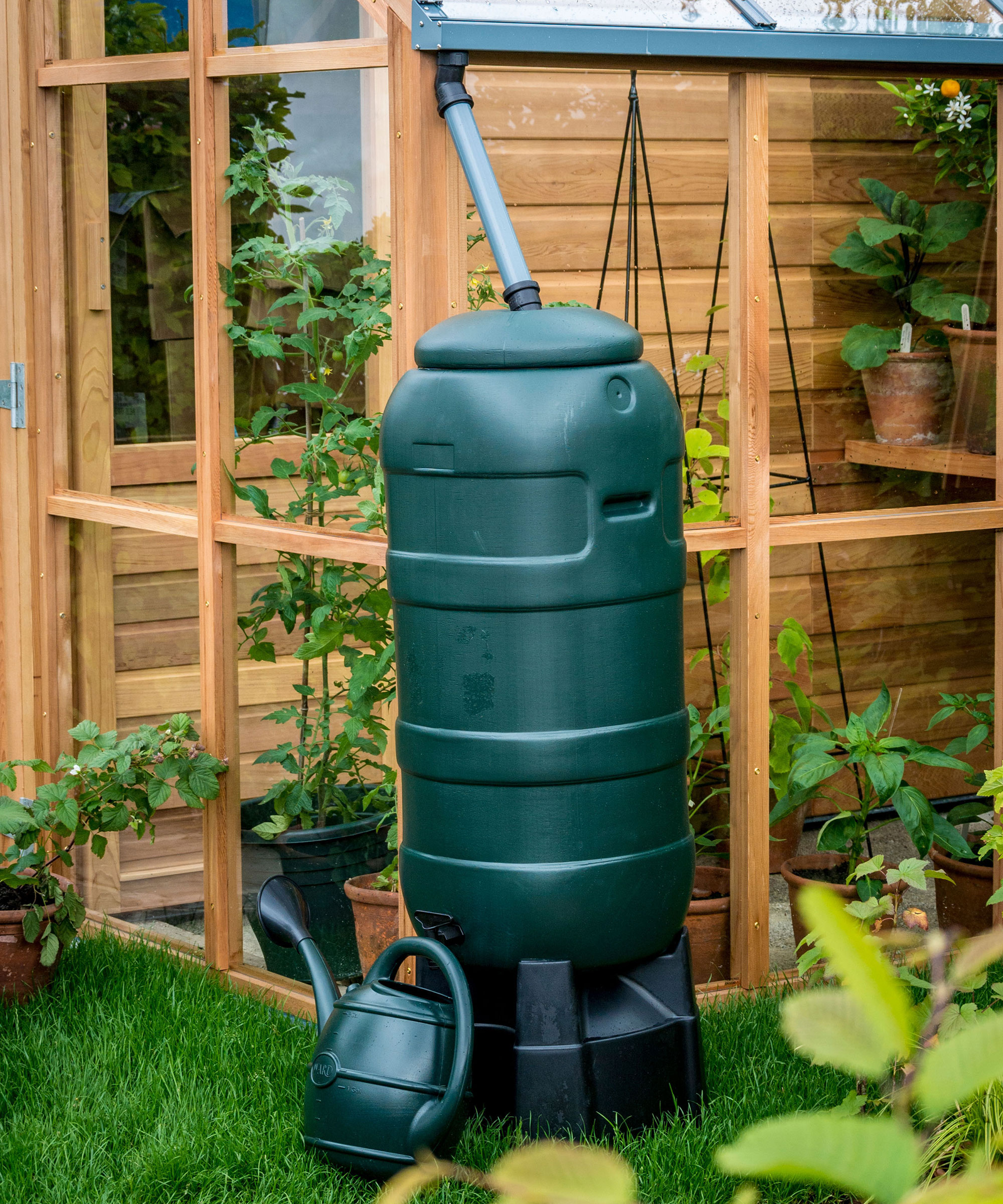
The cost of living is soaring and bills for household utilities are rising at a frightening rate – including tariffs for water. Our gardens use up a lot of water and although we can usually rely on some rain during the spring and summer (often more than we would ideally like) there are still dry spells to contend with.
There are lots of garden water saving tips we can all try so we can be water-wise in the home and garden. So one of your key May gardening jobs should be to install as many water butts as possible, to the house, garage, greenhouse and shed, to collect the 1000s of litres of water that fall as rain every year.
Second, collect the water that runs from the tap in your house while you’re waiting for it to heat up. You’ll be amazed how much you collect. Also, washing up water that isn’t contaminated with bleach and too many food bits can safely be added to the garden.

It’s also important to highlight how and when we should water our plants as this makes a huge difference to the amount we need.
The best time to water plants is early mornings and and in the evenings when the air is cooler and water evaporates more slowly. When you water, direct it at the roots and don’t waste it by splashing the leaves.
Use watering cans where possible as they waste less than a garden hose, but if you do need to use a hose attach a trigger nozzle that you can turn off when not watering.
Top tip: Add water-retaining granules, from Amazon, to container compost as they help reduce the amount of moisture needed. This doesn’t mean you can stop watering though!
10. Get free plants via softwood cuttings
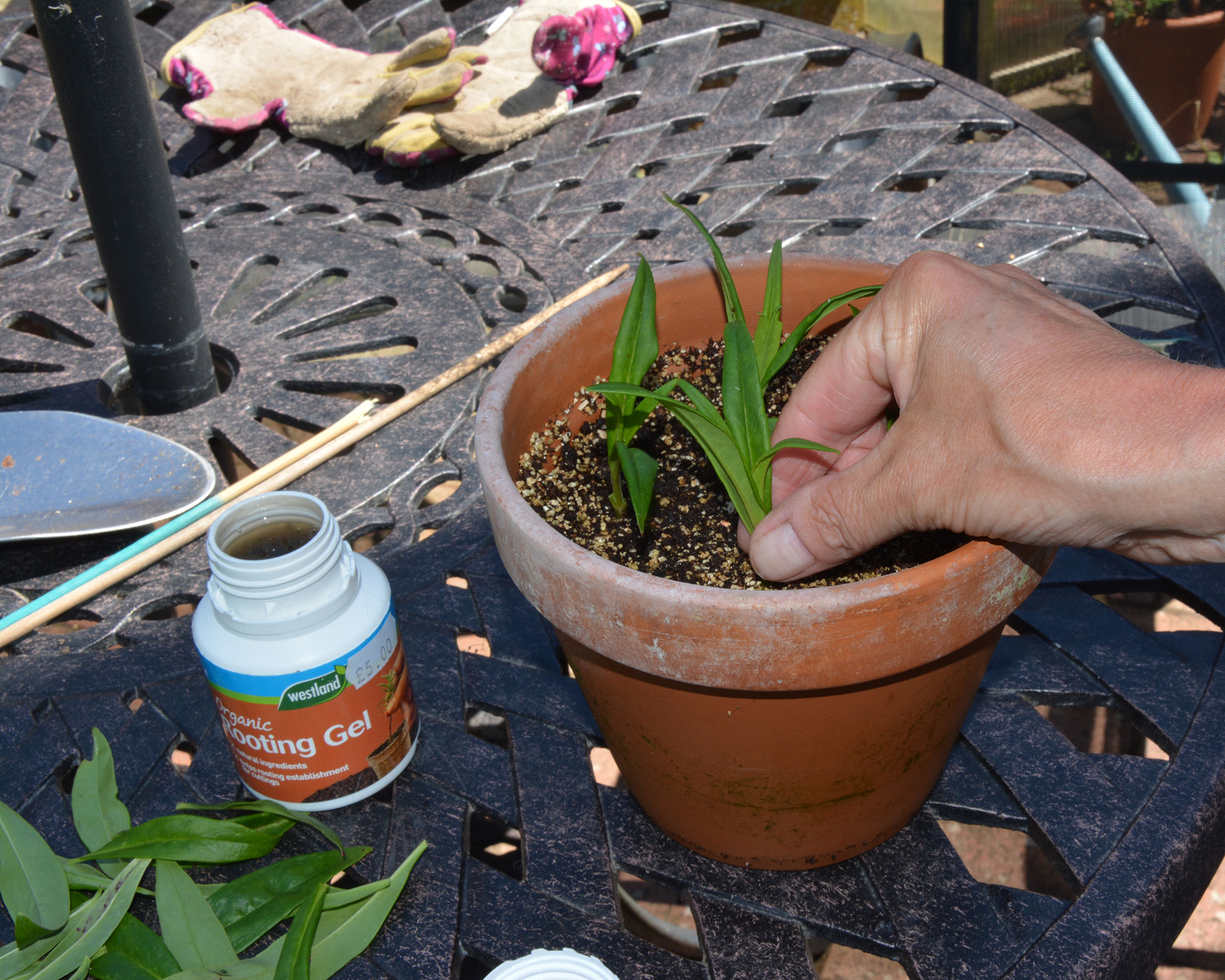
Perennials can be expensive to buy but luckily you can ‘make’ your own free plants by taking softwood cuttings.
This is an easy way of propagation and if you start this month with the fresh, new shoots produced by your plants, you can use the cuttings-grown plants to fill any garden border gaps later in the summer. Failing that, you can keep them somewhere frost-free through the winter and plant them out next spring.
Easy plants to grow from cuttings include pelargoniums, penstemons, cistus and roses, but you can also try it on osteospermum, fuchsias, hydrangeas and buddleja.
Top tip: Pelargonium cuttings do not need to be dipped in rooting compound and should not be sealed in a bag as their fleshy leaves are prone to rots and moulds.

Ruth is the gardening editor of Amateur Gardening magazine and spends her working days carrying out, writing about and photographing the tasks the readers should be carrying out each week, as well as testing many of the new products that arrive on the gardening market. She is horticulturally trained, with a qualification from the Royal Horticultural Society.
